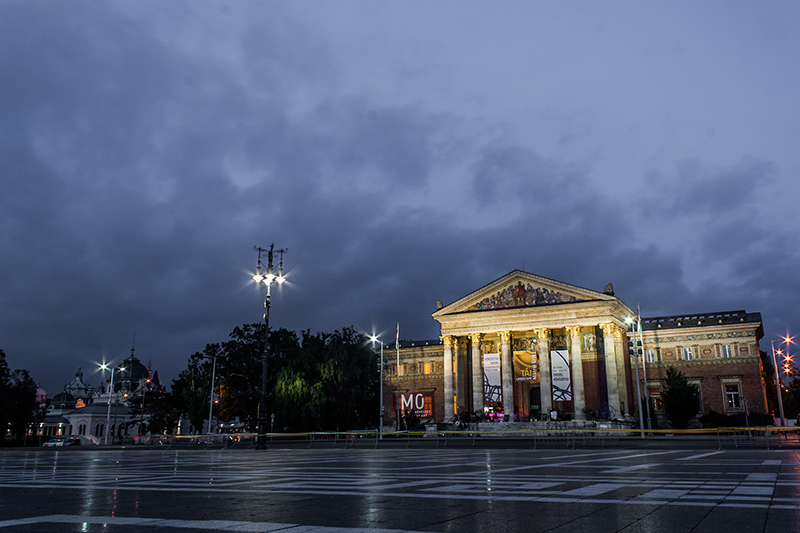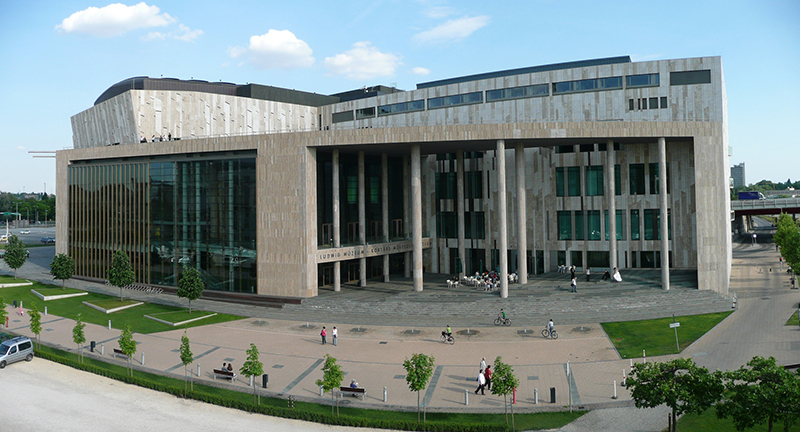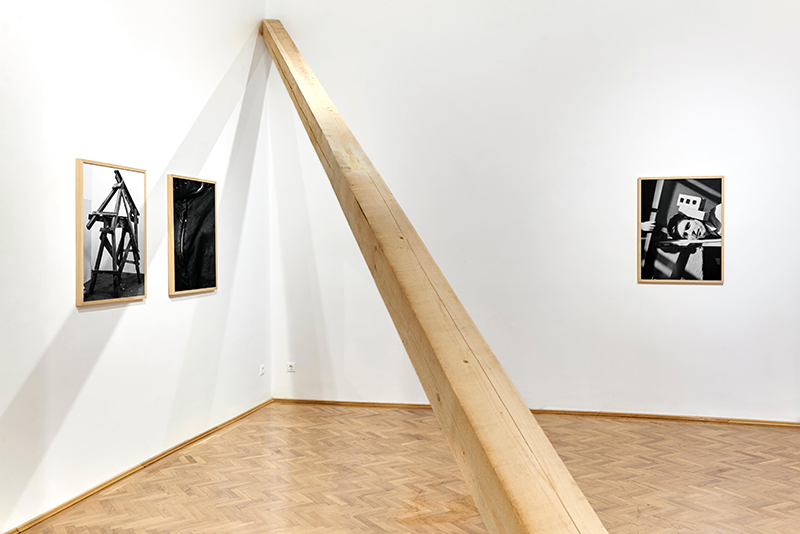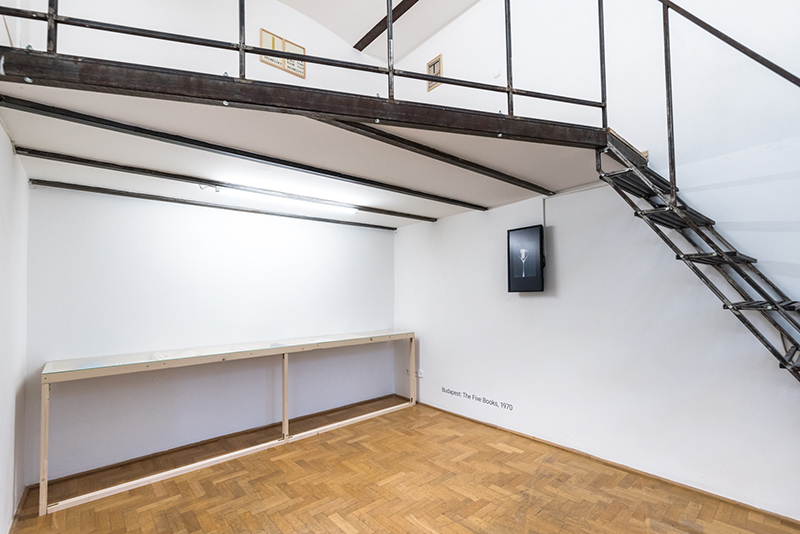“Those who remember the dark times before ’89 and are able to compare them to the present are rightly dejected about the current course of cultural politics.” Czech art critic Natalie Drtinova visited art spaces and met people from the scene in Budapest.
When I was planning my Budapest residency and trying to decide on dates, I asked my hosts from artPortal if there were any events that I should take into account. I got quite a worrying response from Gergely, the editor-in-chief, who stated: “In terms of events, we have a shortage these days. We are living in strange conditions, under ever-growing oppression. The so-called independent, autonomous art community is struggling. There probably won’t be any attractive events in November. It’s hard to plan, organize and execute things because the conditions are getting worse and worse. (…) So, almost anytime you come you’ll find something: the situation.” And I did, among other things. Due to Gergely’s message, and all the concerning news I’d read in the international press, I was preparing for a pretty upsetting situation: no events, some form of censorship, that kind of thing.
Read EAST ART MAGS on erstestiftung.org magazine
EAST ART MAGS is a project of five art magazines in the East Central European region: Artalk (CZ), Artportal (HU), BLOK (PL), Kapitál (Slovakia) and Revista Arta Online (RO).
EAM is a content making and publishing platform with the aim of capacity building in art journalism in the region, supported by VISEGRAD FUND and AFCN.
erstestiftung.org magazine shares selected articles from EAM and translates them into German and – if not yet available – English.
The paradoxes of the Budapest art scene
The division of the art scene into two parallel systems that Gergely described in his recent article was not as clear-cut as I had expected. Sure, some institutions like the Kunsthalle have practically become no-go zones for the local art scene people. So when I told people that I’d gone to see what the Kunsthalle had to offer – for the sake of seeing this forbidden institution with my own eyes – everybody was rather perplexed; even more so when I told them that there was an extensive exhibition about the 19th century life reform movements and their reflection in the realm of visual arts, which was actually quite engaging. Hidden stories was based on vast research and resembled a bigger version of the successful exhibition Artists and Prophets, displayed in the Czech National Gallery in 2015. Luckily enough, this exhibition was not particularly dominated by political issues, so an outsider like me was able to leave with a decent impression. Still a de facto flagship of the MMA, the Kunsthalle has become one of the main boycott sites and its programme is not something people from the art world take notice of.

Műcsarnok Kunsthalle, Photo: © Follett, Wikimedia Commons
Another big institution with a bitter recent history that I was curious to have a look at was the Ludwig Museum. Once an acclaimed institution, more recently a site of an occupation protest, the Ludwig Museum lost most of its credibility and relevance after a controversial process of appointing a new director. The visit, once again, left me with mixed feelings, and I felt neither extremely positive nor negative about it. The permanent collection – or more exactly a selection from the collection – featured numerous great pieces that could be framed within a feminist or queer, anti-establishment framework, but were instead simply left under the category of rituals. “Rites are socially determined acts of spiritual origin, which, as cultural patterns, have preserved something of their religious-magical nature in their everyday form” said the text on the wall. The artists displayed in this section of the spiritual and magical were, of course, all women. Another exhibition, titled Related by Sister Languages: Estonian-Hungarian Contemporary Art Exhibition focused on the topic of national identity. While many of the pieces seemed like easy choices, the exhibition rather surprisingly showcased a video series by Ilona Neméth: Statement (2015). In these five videos the artist interviews five other artists about their national identity, but they also discuss the current state of Hungarian politics and their response to it with their art. The point I’m trying to make here is that things are not black and white and that one won’t find straight-up propaganda in these institutions. What one will find, though, is fluctuating quality and incongruences.

Ludwig Museum, Photo: © Wikimedia Commons
Insecurity, and ways of coping with changing/disappearing structures
I couldn’t help thinking that the art scene was nowhere near in as bad shape as I’d expected, as I went from one exhibition opening to another. However, there seemed to be a pervasive sense of insecurity, with cuts in funding the main threat. And to be fair, when I brought this topic up, people did get upset. Some of them would talk about how they were considering moving abroad for a while; some would explain what their actual source of income was; some didn’t seem too badly disturbed. I became interested in the ways that people from the art scene coped and what influence these cuts had on the alternative scene. One of the options is to go commercial, which was the way chosen by the former director of the Ludwig Museum, Barnabás Bencsik.
During a personal guided tour of Péter Puklus’ exhibition Hero Mother_Subtitle in Barnabás’ Glassyard Gallery, he explained: “Turning to the commercial sphere of the art world seemed like a viable way to sustain myself while staying in the arts industry”. At the other end of the spectrum of non-governmental formations, there are also new structures and forms of alliances, such as the OFF-Biennale. The grassroots biennale is going to be changing its structure this year, since its original, no-funding model was not sustainable. In addition to the OFF-Biennale, though, I found that other platforms were changing their structure, too.

Installation view at the Peter Puklus Hero Mother_Subtitle show. Photo: © Imre Kiss, courtesy of Glassyard Gallery, Budapest
Off I went to check out the renowned Chimera-Project, but to my disappointment it had shut down only a couple of weeks before my arrival. “Chimera-Project is undergoing a major transformation in its model and role. With its size and profile embedded in the current structure, and tendencies of the international and local art markets and scene, the Chimera-Project Gallery cannot be sustainably managed according to the founders’ claims and interests. The founders have therefore decided no longer to operate Chimera-Project as a gallery,” stated their website. I immediately concluded that this was a case of an alternative gallery space having to close down due to recent cuts.
When I met up with Patrick Urwyler, one of the founders of the Chimera-Project, I was prepared to talk about how recent political developments had driven him to close down his gallery. Nevertheless, right away he elaborated on the statement that he and the co-founder, Boglárka Mittich, had put on their website. He explained that in 2013, when they opened the doors of the Chimera-Project Gallery, they had promised to review its performance in five years and to decide if this was the model to go on with. Originally, the Chimera-Project had started as a programme for international flux to the Budapest art scene. When Patrick came to Budapest, he felt that the local art scene wasn’t in a big enough dialogue with other countries’ art scenes. That’s why the primary focus set by Patrick and Boglárka was to bring in more international artists’ exhibitions. Only later did it turn into a commercial gallery and after a recent re-evaluation, they decided to move away from this model. Their decision to shut the gallery space down was merely a matter of restructuring, which would allow them to focus on international exchange and collaboration and, perhaps most importantly, on the management of the Hungarian neo-avant-garde artist Géza Perneczky and his oeuvre.

Géza Perneczky, Identification Program show in the Chimera-Project Gallery. Photo: © Norbet Juhász
“The art market here in Budapest is not developed enough to sustain many commercial galleries – there are still not enough buyers. Of course, it works for some, but not everyone. Another way to boost cashflow is to take government funding.” Patrick explained that the government started offering financial support to commercial galleries to go to international art fairs to present Hungarian art – up to 75 per cent of the expenses for a booth. “This was not an option for us. We decided right from the beginning not to take any money from this government, even though, from a business point of view, it might seem like a good choice.”
The second space I decided to focus on was FERi, a feminist gallery space dedicated to exhibiting critical stances on society and its norms, run by Kata Oltai, an art historian and independent curator. In the midst of the third season, Kata was playing with the idea of closing her gallery project. She’s also the owner of a vintage boutique right around the corner from FERi. Kata first opened the boutique and only six months after that she decided to set up an art space. This gap gave her a head start to build a solid business plan for her gallery, which is fully funded by the clothes sales. Konfekció boutique and FERi are united by punky, bright pink, in-your-face lipstick feminist aesthetics. Having worked as a curator at the Ludwig Museum, Kata chose to quit her position and focus on more niche topics, which she didn’t have the chance to deal with to a fuller extent as a full-time employee of a mainstream institution. Her concept of feminism is very broad and intersectional; she states: “You can’t engage in feminism without thinking about issues such as ecology.” For Kata, feminist thinking is tied to other minority concerns, critical matters and politics. She saw these issues as being too important to ignore and at the same time, she wanted to offer an alternative to the traditionalist commercial galleries and the canon they are forming.
When I asked her about why she was considering closing FERi, it was clear that once again, it had little to do with the recent financial cuts in culture. The main reason was that she didn’t feel there were many critical voices among the young Hungarian generation. After years of pushing for critical discussion, she seemed a bit annoyed, baffled and resigned, all at once. “In other Eastern European countries, like Poland, Romania or Slovenia, you can find much stronger critical positions than in Hungary,” she explained, while admitting that a lot has changed for the better in the past ten years. “Ten or fifteen years ago, nobody really knew what gender was and barely any artists whose art we can read through a feminist prism wanted anything to do with feminism. In that respect, things have been slowly changing.”

Absence by Horváth Krisztina-Mészáros Zsolt. Photo: © Facebook/Feri, courtesy of Feri Gallery, Budapest
Daily talks with Gyula
The person I talked with most about these issues was my guide, Gyula Muskovics, a young curator and theoretician from Budapest. Gyula’s views on the current situation were more uplifting than those I would encounter elsewhere. Every time we met up and talked about art-related issues, I felt like there had to be a way out of every unfavourable situation, while Gyula would always see some silver lining, some way to work around adverse conditions.
By the time Gyula graduated from his MA programme in 2013, Hungarian politics had already taken a turn for the worse. While interning at the Ludwig Museum, he immediately became part of the 2013 occupation of this institution. Resistance quickly became a default setting for him, as it did for most of his peers. Tranzit.hu, an independent and strongly political institution, became one of the central hubs of this resistance. That is also where Gyula started working after obtaining his degree. “Back then, there was this revolutionary atmosphere among the people – museum directors, university students and their teachers were all together in the same place, talking and organizing. In a way, it was a nice time, but this atmosphere has since disappeared. Since then a lot of people have left the country – half of my closest friends live abroad now and come back only from time to time.” Since there are fewer and fewer available positions in culture for people like Gyula, many of these professionals have to move abroad to find a job. At the same time, many people based in Budapest work on international projects and are getting funded by international money. “In 2019, it’s important to work internationally anyway if you are an artist, so many people are probably not even doing it as a necessity.”
Apart from performance art, avant-garde fashion and contemporary dance, Gyula also deals a lot with queer sensibilities in his projects. I was curious if he had enough leeway to work with these issues: “Queer issues are marginal in contemporary art discourse in Hungary. Art history is still mainly a serious, dry history of male artists. Since gender is so marginal even within the art scene, the only way of engaging with it is in the most alternative and progressive spaces. Therefore, the platforms where I’d want to show queer projects are not only critical towards Hungarian politics, but towards the art scene itself. So for now I know that I won’t face the problem of displaying queer art in the Museum of Fine Arts, because it simply won’t happen.” Just like Kata, he is well aware that if he wants to work with critical and perhaps niche issues, it will have to be in the more underground places. Is this a reason to worry about his future prospects? “The very nature of institutions is their normativity and hierarchy, so the idea of working in one doesn’t appeal to me that much anyway. Instead of working for someone or making someone work for my project, I’d prefer collaborations and working with people horizontally.” Perhaps surprisingly, Gyula didn’t seem too worried about his future once he finishes his PhD either. “I am going to continue to do freelancing. Now that I’m doing my PhD, I have a certain freedom to do that while having a stable income. I would like to use this period to build up something that hopefully allows me to stay independent.” Having no memory of more secure working conditions, Gyula didn’t seem too worried, always talking about new projects, collaborations and ideas.

Photo: © Réka Lőrincz’s DIY Magic at FERi by Aron Weber, courtesy of Feri Gallery, Budapest
Call for international collaborations
Just like artists, gallerists and curators in Budapest often have to invest their own money into their projects. Unless you are pro-Fidesz, you have to secure your own funds or have a day job (or a PhD position) to sustain your creative endeavours, which can become more or less a matter of passion. Several of the people I talked to emphasized the necessity of building and strengthening international networks. If the contemporary art scene in Hungary is becoming more and more isolated from the general public, the only way to go, really, is abroad – into international collaborations, or in search of funds from foreign institutions and organizations. This kind of international exchange brings new hope to the situation in Budapest. Nevertheless, one thing that struck me during my residency was a marked generational difference when it came to hope and outlook. Those who remember the dark times before ’89 and are able to compare them to the present are rightly dejected about the current course of cultural politics. But they also remember the 90s, when things seemed to be okay for a bit. Those who grew up and graduated after that – dare I say millennials? – haven’t lost anything yet. And since they have nothing to look back at, they can’t help but notice the new ways and structures of living that are emerging right now.
This article was written and published in the frame of East Art Mags programme with the support of Erste Foundation. First published on 18 February 2019 on Artportal.hu.
This text is protected by copyright: © Natalie Drtinova / artPortal. If you are interested in republication, please contact the editorial team.
Copyright information on pictures, graphics and videos are noted directly at the illustrations. Cover picture: Gyula Muskovics, Tamás Páll and Viktor Szeri, performance Phoenix for the opening of the WE WILL NOT CHANGE OUR SHOW show in the House of Arts in Brno. Photo: © M. Dvořáková.